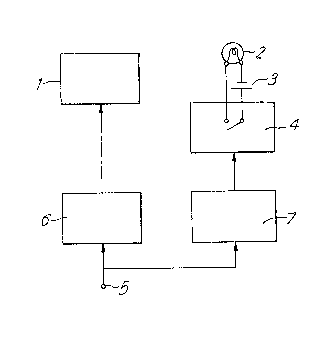Une partie des informations de ce site Web a été fournie par des sources externes. Le gouvernement du Canada n'assume aucune responsabilité concernant la précision, l'actualité ou la fiabilité des informations fournies par les sources externes. Les utilisateurs qui désirent employer cette information devraient consulter directement la source des informations. Le contenu fourni par les sources externes n'est pas assujetti aux exigences sur les langues officielles, la protection des renseignements personnels et l'accessibilité.
L'apparition de différences dans le texte et l'image des Revendications et de l'Abrégé dépend du moment auquel le document est publié. Les textes des Revendications et de l'Abrégé sont affichés :
| (12) Demande de brevet: | (11) CA 2084026 |
|---|---|
| (54) Titre français: | ECLAIRAGE POUR AFFICHAGE ELECTRONIQUE |
| (54) Titre anglais: | ILLUMINATION OF DISPLAYS |
| Statut: | Réputée abandonnée et au-delà du délai pour le rétablissement - en attente de la réponse à l’avis de communication rejetée |
| (51) Classification internationale des brevets (CIB): |
|
|---|---|
| (72) Inventeurs : |
|
| (73) Titulaires : |
|
| (71) Demandeurs : |
|
| (74) Agent: | SMART & BIGGAR LP |
| (74) Co-agent: | |
| (45) Délivré: | |
| (22) Date de dépôt: | 1992-11-27 |
| (41) Mise à la disponibilité du public: | 1993-05-29 |
| Requête d'examen: | 1994-09-01 |
| Licence disponible: | S.O. |
| Cédé au domaine public: | S.O. |
| (25) Langue des documents déposés: | Anglais |
| Traité de coopération en matière de brevets (PCT): | Non |
|---|
| (30) Données de priorité de la demande: | ||||||
|---|---|---|---|---|---|---|
|
ABSTRACT
A problem arises in electronic equipment
incorporating a display, such as an LCD display, which
is not intrinsically illuminated. The present
invention provides a controlled backlight for such
displays, and is particularly useful in battery-
powered equipment where power consumption must be kept
to a minimum. The circuitry comprises a display 1
controlled via a conventional display driver 6 from
other equipment (not shown) such as a microprocessor.
Whenever the display is changed a signal is sent also
to a timer circuit 7 which triggers, and passes a
control signal to an electronic switch 4 which in turn
passes power from a battery 3 to a lamp 2. The lamp
2 is arranged to illuminate the display 1. After a
preset period, the timer circuit 7 sends a further
control signal to the switch 4 to switch lamp 2 off.
Figure 1.
Note : Les revendications sont présentées dans la langue officielle dans laquelle elles ont été soumises.
Note : Les descriptions sont présentées dans la langue officielle dans laquelle elles ont été soumises.

2024-08-01 : Dans le cadre de la transition vers les Brevets de nouvelle génération (BNG), la base de données sur les brevets canadiens (BDBC) contient désormais un Historique d'événement plus détaillé, qui reproduit le Journal des événements de notre nouvelle solution interne.
Veuillez noter que les événements débutant par « Inactive : » se réfèrent à des événements qui ne sont plus utilisés dans notre nouvelle solution interne.
Pour une meilleure compréhension de l'état de la demande ou brevet qui figure sur cette page, la rubrique Mise en garde , et les descriptions de Brevet , Historique d'événement , Taxes périodiques et Historique des paiements devraient être consultées.
| Description | Date |
|---|---|
| Inactive : CIB de MCD | 2006-03-11 |
| Demande non rétablie avant l'échéance | 1999-03-26 |
| Inactive : Morte - Aucune rép. dem. par.30(2) Règles | 1999-03-26 |
| Réputée abandonnée - omission de répondre à un avis sur les taxes pour le maintien en état | 1998-11-27 |
| Inactive : Renseign. sur l'état - Complets dès date d'ent. journ. | 1998-06-19 |
| Inactive : Abandon. - Aucune rép dem par.30(2) Règles | 1998-03-26 |
| Inactive : Dem. de l'examinateur par.30(2) Règles | 1997-09-26 |
| Exigences pour une requête d'examen - jugée conforme | 1994-09-01 |
| Toutes les exigences pour l'examen - jugée conforme | 1994-09-01 |
| Demande publiée (accessible au public) | 1993-05-29 |
| Date d'abandonnement | Raison | Date de rétablissement |
|---|---|---|
| 1998-11-27 |
Le dernier paiement a été reçu le 1997-11-06
Avis : Si le paiement en totalité n'a pas été reçu au plus tard à la date indiquée, une taxe supplémentaire peut être imposée, soit une des taxes suivantes :
Veuillez vous référer à la page web des taxes sur les brevets de l'OPIC pour voir tous les montants actuels des taxes.
| Type de taxes | Anniversaire | Échéance | Date payée |
|---|---|---|---|
| TM (demande, 5e anniv.) - générale | 05 | 1997-11-27 | 1997-11-06 |
Les titulaires actuels et antérieures au dossier sont affichés en ordre alphabétique.
| Titulaires actuels au dossier |
|---|
| AT&T WIRELESS COMMUNICATIONS PRODUCTS LTD. |
| Titulaires antérieures au dossier |
|---|
| GRAHAM EDGAR BEESLEY |